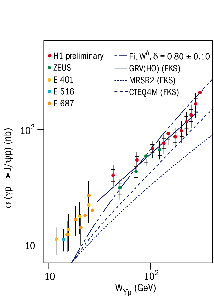
Neural computation – analysing data by simulating the way the brain works – is another area of application where high-energy physics is in the vanguard of development. This state-of-the-art physics was demonstrated at the recent Neural Computation in High-Energy Physics Workshop, NCHEP-99, held in Ma’ale Hachamisha (near Jerusalem), Israel. The workshop was organized by Halina Abramowicz and David Horn of Tel Aviv and gathered together 30 participants from 10 countries. The workshop showed that the brain-modelled computational techniques, with which high-energy physicists have been experimenting for 10 years now, have definitely come of age.
Highlights on the triggering front included a status report, presented by Christian Kiesling of MPI Munich, on the much-heralded neural net trigger of the H1 experiment at DESY. This trigger was essential in extending the acceptance of the photon-proton energy for elastic J/psi production over the entire kinematic range of DESY’s HERA electron-proton collider (figure 1), and well beyond that obtainable using the standard techniques. Another such highlight was a talk, presented by Joao Varela of LIP Lisbon, on a modular neural electron/photon trigger for the level-1 trigger of the CMS experiment at CERN’s LHC collider, which is benchmarked at 40 MHz in a test beam.
Talks, to place neural techniques within the broader spectrum of high-energy physics techniques, also included: the Silicon Vertex Tracker, now well under way at the CDF experiment at Fermilab (Franco Spinella, INFN Pisa); and overviews, presented by Grzegorz Wrochna of Warsaw and Saul Gonzalez of CERN, respectively, of the LHC experiments’ CMS and ATLAS trigger systems. Possible future applications, presented by Erez Etzion and Gideon Dror of Tel Aviv, included a muon transverse momentum trigger for ATLAS and a z-vertex postion finder for ZEUS.
Finally, Bruce Denby of Versailles and Jose Seixas of Rio de Janeiro gave overviews of neural network hardware platforms, which included Digital Signal Processors (DSPs) and Field Programmable Gate Arrays.
Neural network methods have now become accepted as part of the standard toolbox of off-line data analysis techniques. This was witnessed by two D0 (Fermilab) results, a leptoquark production limit (presented by Silvia Tentindo-Repond of Florida State), and a precision measurement of the top quark mass (presented by Harpreet Singh of UC Riverside). DELPHI and OPAL members also talked about further studies in the Higgs quest, rare B decays, and tau-exclusive branching ratios. Anatoli Sokolov of IHEP, Moscow, gave a comprehensive overview of off-line applications, as well as some hints for the future.
At the end of the workshop, David Horn presented highlights of the Neural Computation in Science and Technology Conference, which had taken place at the same venue immediately before NCHEP-99. According to him, if high-energy physicists wish to remain up-to-date in this field, they will have to familiarize themselves with some of the more modern techniques such as Independent Component Analysis, Support Vector Machines, advanced clustering techniques, and genetic optimization.
NCHEP-99 was sponsored by the Israel Science Foundation.








